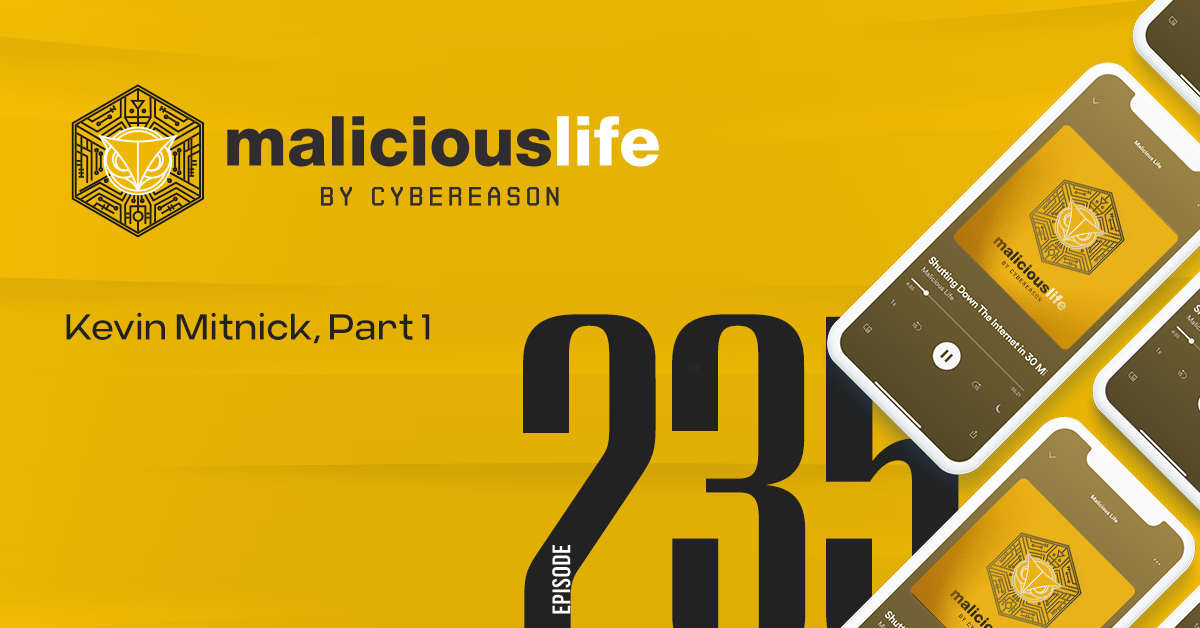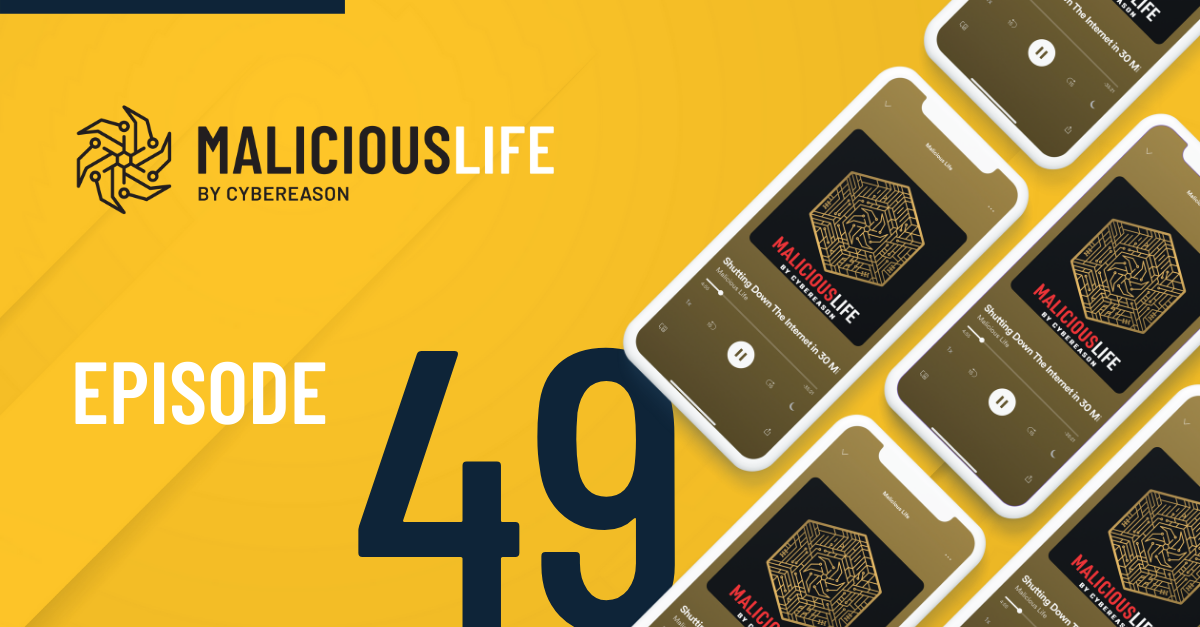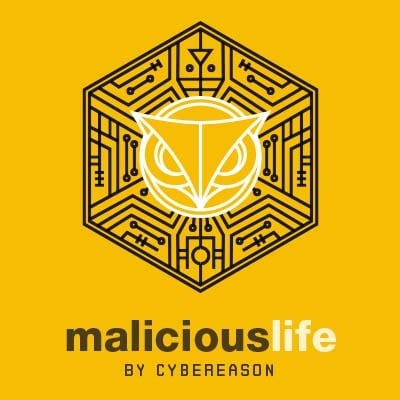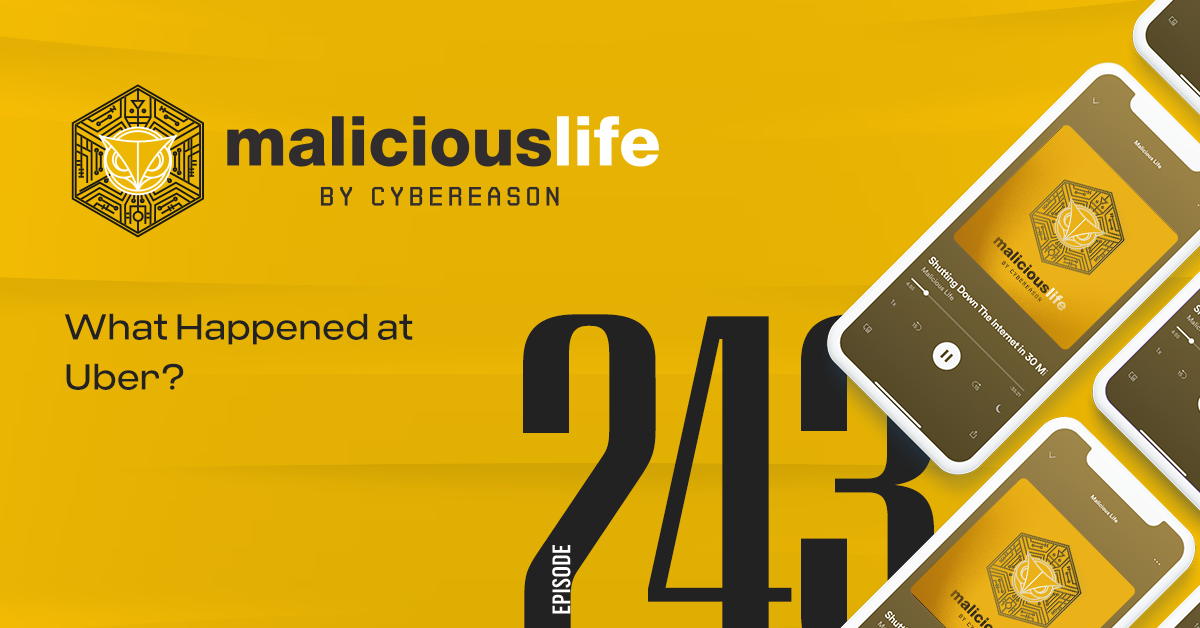Malicious Life Podcast: 'Pa Bell' Vs. Youth International Party Line Transcript
At the Chicago Civic Center on Friday, August the 23rd of 1968, a left-wing political group prepared a bid to challenge for the U.S. presidency. Just as they began their announcement, though, the candidate, along with several close aides, was arrested by the Chicago police. The aides were bailed out of jail later that day, but the candidate himself was never heard from again. It was speculated that the chief of police had later cooked and eaten him for dinner.
This was the eve of Vice President Hubert Humphrey’s Democratic National Convention. Humphrey had earned the Democratic Party nomination following the assassination of John F. Kennedy, and would face Richard Nixon in the general election later that year. Much like the most recent U.S. election, the prospect of a choice between Nixon and Humphrey proved unsatisfying to many voters, especially on the left. Between dropping acid and vibing out to Hendrix, the Beatles and Janis Joplin, many in the hippie movement were also protesting years of escalating involvement in the war in Vietnam, and slow progress towards racial desegregation. To those who sought to overthrow the established order, Humphrey and Nixon were one and the same.
So one political activism group called the Youth International Party Line decided to take a stand, by nominating a candidate to challenge for the highest office. He was 145 pounds, black and brown, with a prominent snout.
A President For Breakfast
They called him Pigasus. Pigasus grew up on a farm, but was now the figurehead of a movement. He became so famous, in fact, that his aides claimed a threat to his life, and they demanded in a letter to President Lyndon B. Johnson that he be offered the same secret service detail as any other candidate gets, and be included in White House foreign policy briefings.
Though his previous political experience was limited, Pigasus offered a unique policy agenda. His supporters described him as the ideal candidate because, quote, “he was born in the slums of a pig-stuy, he is many colors and he is going to be slaughtered.” Most presidential candidates have a plan for what they’re going to do on their first day in office, and so did Pigasus. His supporters were, quote, “going to roast him and eat him. For many years, the Democrats have been nominating a pig and then letting the pig devour them. We plan to reverse the process.” It was, you’d have to say, a more ambitious plan of action than either Humphrey or Nixon were offering. “If we can’t have him in the White House,” one party member told The Montreal Gazette, “we can have him for breakfast.”
Outside the Chicago Civic Center on the morning of August 23rd, the scene was mad: tens of thousands of protesters, met with 12,000 police officers, 7,500 army and 6,000 National Guard troops. In the midst of it all, a small station wagon pulled up to the Civic Center plaza. Around 200 protestors, alongside reporters and just over a dozen policemen and city detectives stood waiting. Some 50 members of the party passed around pamphlets, and held up signs: “Pig Power”, “Live High on the Hog”.
Out of the car stepped a party leader, Jerry Rubin, holding their candidate for office in his arms. “We want pig! We want pig!” chanted the raucous crowd. Just moments into his campaign announcement, though, police closed in. Pigasus and other members of the party were taken into custody. Later that day, an officer called out the names of each of the arrested, as they sat in holding cells. “You guys are all going to jail for the rest of your lives,” he said, “the pig squealed on you!”
Hours later, the humans were released from jail, but Pigasus did not go with them. Rumor spread that Chicago’s police chief ate Pigasus. The Chicago Tribune reported that the candidate was transferred to the city’s Anti-Cruelty Society. His so-called “in-HOG-uration” ceremony, scheduled to coincide with the date of Nixon’s inauguration ceremony, never came to pass.
Though that August day marked the beginning and end of his candidacy, Pigasus’ legacy continued on through his “wife”, Mrs. Pigasus. A couple of days before Richard Nixon was anointed the 37th U.S. president, a small protest was held before the Washington Monument, featuring the Youth International Party candidate’s spouse. Midway through the demonstration, amid songs and chants, the candidate for First Lady escaped her pen, and began frolicking about the Monument grounds. She was chased around the lawn by three policemen on horseback, two in patrol cars and one by foot.
According to sources, Mrs. Pigasus and her husband lived out the remainder of their days outside of the media spotlight, on a farm in upstate Illinois.
Youth International Party Line
Hi, I’m Ran Levi, and you’re listening to a podcast about hacking. Perhaps it’s not obvious yet how Pigasus, America’s yummiest presidential candidate, relates to what we typically talk about on this show.
“Hacker culture”, quote-on-quote, is a loaded term, and not so easily bottled into one thing. It spans the ideological spectrum, represented in equal parts by apolitical technology enthusiasts and malevolent sowers of chaos. Over the years it has been shaped by political movements, both above and below ground, as well as developments in technology and the market. The history of hacking and hacker culture is most often told from the late ‘80s onward, but its origins began decades earlier. For instance, perhaps the most influential hacker magazine–2600: The Hacker Quarterly–began in 1984, as the spiritual offspring of a hacker zine that had begun publishing thirteen years prior. That zine, titled “Youth International Party Line”, YIPL for short, reflected the hippie activist views of its parent organization: youthful energy, a fighting spirit, and revolution against the powers that be, sprinkled with some light satire from the people that brought you Pigasus.
It was conceived of by two young men: “Al Bell”, whose true identity is unknown to us today, and Abbie Hoffman, leader of the hippie, New Left, Youth International Party. According to legend, they came together on May 1st–the date celebrated as “International Workers’ Day” every year by communists and socialists–to conceive of a publication that would both bring together technologists, and challenge the authority of the nation’s largest corporate monopoly.
The Bell Telephone Company
The Bell Telephone Company was founded by Gardiner Green Hubbard, father-in-law to Alexander Graham Bell, in 1877. Being the sole proprietor of a powerful, early-stage technology, the company found great initial success. Problematically, even many years after their origin–when other companies had the capability and finances to develop their own phone systems–Bell nonetheless retained a kind of monopoly over their market. It was 1894 when Alexander Graham Bell’s exclusive patent expired, and 6,000 new companies entered the industry. But they didn’t last long. In 1913, Bell’s holding company, American Telephone and Telegraph Company – later rebranded as AT&T, settled an antitrust lawsuit, laying the groundwork for their sole market dominance.
By 1940, Bell had evolved into what you’d call a “natural” monopoly. They’d long ago defeated their only serious rivals in the market–Western Union–and now controlled essentially the entire communications infrastructure of North America. Because the industry has very high barriers to entry (you can’t just go out and build a telephone network, like you can open up a shop), no other person or company could reasonably enter the phone business without being crushed like an ant. So, without protest from the U.S. government, Bell essentially was the telephone for the majority of the 20th century. They set the rules, they set the prices, and there was no alternative. They even took on a nickname, “Ma Bell”, later “Pa Bell”, for their domineering, fatherly role over American society. But things were about to change.
MCI
It began with truck drivers, hauling various commodities between the cities of Chicago and St. Louis in the late 1960’s. The truckers had two-way radios which they used to communicate between themselves and with their operators – but those radios had very limited range, which made such communication difficult.
Enter MCI. MCI was a telecommunications company founded in 1963, and its plan was to build a series of microwave relay systems that could extend the range of truck radios. A trucker could pick up his headset in Chicago, press the push-to-talk button – and his voice would be relayed from one microwave tower to another, all the way to St. Louis.
It was a great plan and a great technological innovation – but there was a catch. To make MCI’s system really useful – it had to be connected to the rest of the telephone system, or else it would be restricted to a very small number of users. The problem was that the telephone system was controlled by Bell – and Bell had no incentive whatsoever to allow a potential competitor into its system. So they didn’t. MCI couldn’t connect its relay system to landline telephones, and so their whole business plan was in big risk.
This kind of monopolistic behavior made Bell a prime target for ire of two very different ideological groups. One group was the people who viewed monopoly as a threat to technological innovation. With no competition, there’s much less pressure to develop new technologies – and sometimes even more pressure to restrict innovation, as in this case where Bell was fighting MCI’s new technology. The 2nd group were anti-capitalists, like Abbie Hoffman, who saw Bell as “The Man”, a symbol of tyranny against the ordinary citizen. Hoffman wasn’t interested in technological innovation per se, and I’m pretty sure he didn’t much like MCI any more then he did Bell: for him and his fellow party members, MCI was probably just another faceless corporation. But somehow, both groups found Bell a common enemy.
Party Lines
Hoffman named his zine “Youth International Party Line”, a clever play on the name of his political organization–the Youth International Party–with the concept of a “party line”.
Party lines are foreign to us today, but at their height in 1950, they serviced a full three-quarters of Americans with telephones in their homes. The concept was straightforward: instead of connecting a direct line between your home and the telephone company’s headquarters, multiple homes–even a small neighborhood of homes–could be connected to the same line. Doing so provided cost savings for the customer, because Bell would save on equipment and separate installations. It also caused the occasional headache. Each household would be given its own, unique ringtone, so as to distinguish between which calls were meant for whom. But there was nothing stopping a nosy neighbor from listening in on a conversation meant for someone else. Members of a party line would have to cooperate with one another, too, by making sure they didn’t hog the line when someone else needed it.
Hoffman thought of his zine as a kind of party line–a means to disseminate economically and politically disruptive information to a community of cooperative, sharing members of the anti-establishment sort. Al Bell saw in it a means of connecting technologists from different parts of the country, and building collective knowledge. These were two very different people with very different goals, and so the earliest iterations of YIPL were a kind of mashup of tech tips and radical left-wing politics, calls for fundraising mixed with political rants and instructions on how to build pipe bombs. The glue that bound it all together, though, was phreaking.
Phreaking (spelled with a “ph” for “phone”) is a term used to refer to those who explore, experiment, and tamper with telephoning systems. It began in 1954, after Bell Telephone fatefully disclosed the signal frequencies which were used to control the telephone network, including long distance calls, in a technical journal meant for the company’s engineers that ended up leaking to college campuses nationwide. In 1957, Joe Engressia, a blind seven year-old boy with perfect pitch, happened upon a discovery: that he could affect the recording function of his phone, by whistling into it at a frequency of about 2600 Hertz. Other pioneer phreakers found other means of producing 2600 Hertz, like John Draper, who earned the nickname Captain Crunch when he discovered a plastic whistle which played at 2600 in his cereal box. By producing that particular frequency, phreakers could trick Bell’s systems into allowing them to place free, otherwise expensive, international calls. More advanced phreaker methods developed over the following decade, including the invention of devices that could get the Bell network to do, well, just about anything. This was hacking before computers.
By the late ‘60s, nerds and weirdos alike had formed a small but formidable phreaker community. Its proponents spanned the country. Friendships and information sharing across great geographical distances proved no issue, for these were people who knew how to place free calls to wherever they liked, whenever they wished. Dedicated phone phreakers like Engressia, Draper, and, among others, Steve Jobs and Steve Wozniak, were primarily motivated by technical curiosity. But, as history shows, apolitical technologies always ends up twisted, in the hands of those who wish to leverage it for power.
Sticking It To ‘The Man’
From June 1971, the inaugural issue of Youth International Party Line begins with a declaration of purpose:
We at YIPL would like to offer thanks to all you phreaks out there. [. . .] YIPL believes that education alone cannot affect the System, but education can be an invaluable tool for those willing to use it. Specifically, YIPL will show you why something must be done immediately in regard, of course, to the improper control of the communication in this country by none other than the BELL TELEPHONE COMPANY.
At the bottom of its cover page, YIPL outlines its first phreaker tip, leveraging Bell’s practice of sending new “credit cards” (today we might think of them as “calling cards”) to customers at the beginning of each new year. Phreakers had figured out a way to forge numbers that were realistic enough to fool operators, but couldn’t be tied to you when the bill came, because they didn’t actually match your identity in Bell’s registries.
Aware that the information they were publishing, on the cover of their very first issue, presented some legal ambiguities for the publishers, the segment ends with a conditional. Quote:
Fraud is illegal, so WE don’t think you should make free calls. This Code has already been printed in many underground papers, as you know.
As a warning, it seems more than a bit disingenuous. The following article, on the next page of the magazine, describes how to install your very own unauthorized phone in your home. That article, too, ends with a warning that you must read in its intended, sarcastic, tone. Quote:
Yippies have been known to fool around with shit like this from time to time without the permission of their local telephone company and even though they usually get away with it, we at YIPL would never think of advocating that type of irresponsible activity. You should always check with your local phone company to pay them any extra money that you might be responsible to them for, before ever fooling around with your phone. The phone company is our friend, and they are here to help you.
The Cheshire Catalyst
But In only five years’ time, the YIPL magazine changed its name, changed its name again, and transformed its identity. It was the start of a prolonged process of decline for the once cheeky magazine.
Hi there. This is the Cheshire Catalyst known as Richard Cheshire.
I went to the May Day event in New York City in 1971. How I heard about that, I really couldn’t tell you. But I did find out about it and went down to New York and attended it and it was put on by YIPL
Cheshire Catalyst, as he’s known, was a YIPL reader from its very first issue, and its editor for its very last. That makes him one of the few people left on Earth qualified to speak to its history firsthand.
Well, as I understand it, Al Bell, just looked at his newsletter one day and asked himself, “What’s all this political crap doing in my technical newsletter?”
There are no public record accounts of what went on inside YIPL’s office during those early years. What we do know is that on August 28, 1973, Abbie Hoffman was arrested for possession and intent to sell cocaine. He claimed the cops arranged the meeting, and planted the drugs. Instead of facing the charges in court he skipped bail, and abandoned his family to run and hide from the authorities in upstate New York. He underwent plastic surgery in order to alter his appearance, and often disguised himself as an orthodox Jew.
Amid all the madness, Hoffman could no longer lead his political party, let alone a technology magazine. That left Al Bell the sole remaining founder of YIPL.
He was a technologist. He liked playing with the fun networks and sharing knowledge on that sort of thing. But this political crap was just not what he was into. He was not a revolutionary. He was not really one of the yippies. He was just helping out with the newsletter and that’s when he picked up his marbles, walked out of Bleecker Street and went up Broadway, got this own loft and set up the newsletter there on Broadway.
The first issue of the magazine released after Hoffman’s arrest also came with a name change: instead of Youth International Party Line, it would now be referred to as “Technological American Party”. Its front page editorial opens, quote:
No fancy excuses: We changed our name because we want people to know where we really are and what we hope to become. Technological American Party is rapidly becoming a people’s warehouse of technological information, and a name like Youth International Party Line simply didn’t ring a bell.
He tried to get a bank account open under Technological American Party. But because he was not a bona fide political party, he could not get a bank account. So he changed the name again to the Technological Assistance Program and that he was able to get a bank account for.
The magazine may have transformed because of an arrest, a change in leadership, maybe even a technicality of opening a bank account. But, whatever the obvious reason, there was always a change brewing underneath. The hippie movement of the late ‘60s that fueled YIPL had finally come to an end. The Vietnam War which had fueled it was winding down. Icons like Jimi Hendrix, Janis Joplin, and Jim Morrison had all died young. Richard Nixon, enemy of all things counterculture, won a temporary re-election. As the movement that folks like Abbie Hoffman so deeply believed in became absorbed into the mainstream they’d so despised, and the boomer generation which once fought capitalist greed transitioned into the boomer generation that drove consumerist of the ‘80s, the market for YIPL-brand anti-establishmentism faded into the background.
“A law firm with an antenna on the roof”
But while the hippie movement was in decline and YIPL magazine was having a change of heart – MCI, Bell’s business rival in the world of telecommunications, wasn’t prepared to go down without a fight.
MCI approached the FCC and asked it to intervene and put a stop to Bell’s monopolistic behaviour: to force Bell to connect MCI’s relay system to its national telephone system. While the FCC debated and debated the matter for months, Bell wasn’t sitting idly. To make life even harder for MCI, Bell decided that negotiations about interconnection tariffs will be handled on a per-state basis. In practice, that meant that MCI would have to fight Bell in each one of 49 different jurisdictions – which will probably take years, and force MCI to spend an insane amount of money on legal costs.
This was very bad news for MCI, which already spent millions of dollars on the legal battle with Bell and it’s parent company, AT&T. In fact, the industry joke was that MCI had more lawyers than landlines, and it became known as “a law firm with an antenna on the roof”…
And so MCI decided to go ‘all in’, and in 1974 filed an antitrust lawsuit against AT&T. The FCC eventually joined the lawsuit and sided with MCI – but as you’re probably aware, these kinds of legal battles can take years. And it did: in six years, the case barely went through the evidence phaze.
An FBI Inquiry
By ‘73-74 the hippies had largely moved on, and phreakers, nerds and miscellaneous braniacs had taken over. These folks weren’t so keenly interested in taking down The Man. When YIPL became TAP, it reflected a larger shift away from the political affiliations–the mission–that it once had. From issue 25:
TAP is no longer Technological American Party. TAP is TAP. We are not a political party. We do not advocate anything, as an organization.
Bell left the magazine not so long thereafter.
Well, I grew up in Rochester, New York and that’s where I first got my subscription to the newsletter at my post office box in Midtown Plaza in Rochester.
Then I moved to Boston for a year at ’75, then in ’76 moved to the city and I kept filing a change of address with the magazine – the newsletter rather and finally a year after I got to New York, I finally went down to meet the gang at the Broadway office.
By that time, they were out of the YIPL offices on Bleecker Street and Al Bell had left the newsletter himself. That left Tom Edison as the editor-in-chief with a few hangers on.
By 1977, TAP was just a group of guys operating out of a stuffy office space in a rundown building off of Bryant Park in midtown Manhattan. They had a mailbox, getting together once a week to hang out, talk, write and print.
We were constantly invited by the newsletter to come on up to the office on Broadway on any a Wednesday evening, and helped paste up or answer mail or whatever odd jobs were available and after living in the city for a year, I finally went up to Broadway, dropped in and started hanging out with the group.
As to the folks, there was a mixture of high school students. We had an aerospace engineer from out of town that would come in and hang out with us because he liked to know what was going on and what he had to protect his company from.
Walking in any given week, you probably wouldn’t peg this motley crew of dorks and hippies as anything much to worry over. Even today, you can hear it in Cheshire’s voice. It’s the kind of voice you can imagine talking about science fiction, or old pennies. It’s hard to imagine Cheshire talking about taking down The Man, or inciting any kind of violence.
Or being under FBI investigation.
From the beginning, YIPL/TAP had been under the eye of at least a couple enforcement agencies. The New York Telephone Company had sought out legal action against the publication, for disseminating information harmful to their business. They’d taken their inquiry all the way up to the Attorney General of New York, but were turned off on the grounds that their claim would have violated freedom of the press.
In 1973, the FBI took note of this dispute. A Freedom of Information request revealed internal documents from 2006, in which the FBI tried to connect the dots between Youth International Party’s more radical tendencies, Abbie Hoffman’s arrest, and the TAP magazine.
The investigation continued for years, until at least 1980. It turned out that at least one leading member of TAP–whose name was redacted from the documents–had been actively cooperating with the Bureau.
We had one fellow known as “Al the Chemist” and I always swore that he was probably the FBI mole in the organization.
So why all this fuss? Well, the investigation had begun on the basis of phone phreaking. But, after some digging, the FBI believed it had evidence that TAP and its editors were distributing information on how to construct deadly explosives. Quote:
On April 27, 1979, the New York Office of the Federal Bureau of Investigation was in receipt of information that a meeting sponsored by the Technological American Party literature was distributed which described the mechanics of constructing an Atomic Bomb. Copies of this literature were forwarded to the Department of Energy for its analysis as to the legitimacy of these plans. The Department of Energy completed its analysis by concluding that there was a possibility that such a device could give a nuclear yield.
Cheshire was a writer for the magazine at the time…
sent us a poster about how to build a nuke and Tom asked me whether we should publish this and I said, “You know what? This information could take out the phone network and that’s not what we’re about. We’re into using the phone network but not destroying it.”
Al the chemist was a fellow I had pegged as the FBI mole in our organization and I was almost hoping he really was an FBI mole because I would rather have them knowing what we were doing and more importantly what we were not doing than have them sitting around their federal building office worrying about us. We were just publishing this stuff. We didn’t go out and do anything that could worry them.
For a publication that had tried to excise its political roots long ago, TAP was now embroiled in a federal investigation into potential terrorism, and things only got more serious from there.
The End of YIPL/TAP
Tom Edison was a schoolteacher in New Jersey, at the time that he was editor-in-chief of TAP. Unlike his predecessors in the position, Tom was neither an ideologue nor a strong personality. After years of brewing tension surrounding the magazine–politics, investigations, legalities–something just…cracked.
I got a phone call one day from Tom who said, “Listen, I need you to get a truck, pick up all this crap out of my basement and get it out of here or else it’s all going in the trash because my apartment has just been firebombed.”
The cop said it was a very professional break-in and the fire marshal said it was a very amateur arson. Fellows had poured some kerosene, gasoline, whatever, in the middle of his den, lit it and left and then took out a bunch of his reel to reel music tapes including some Beatles music and some other stuff that was just priceless and – but they didn’t open the windows.
So once the fire had eaten up all the oxygen, you’re pretty much burned out. But just before it did, it blew out the windows and that’s when the neighbors saw the fire and called the fire department.
This is the most remarkable and unbelievable part of the YIPL/TAP story: why Tom was targeted, who did it, and who they were working for. To this day, there are no clues. Only theories.
It is known however that the telephone companies tend to hire ex-FBI agents as their security personnel and those guys usually have contacts for people who know how to break into places but who may not necessarily know how to fire a good arson.
So we always had these conjectures but we never pursued it. We never had the means to pursue that and we had a newsletter to put out.
This incident marked the end of TAP. With other, more important things to deal with, Tom Edison left his post at the magazine, giving it entirely to Cheshire. By this time most of the infrastructure around them was gone, and Cheshire was essentially running it all on his own. After a couple more editions, he could carry the torch no longer. 111 issues down, and 13 years running, TAP officially ended.
The Bell Breakup
But on New Year’s Eve, 1983, After a decade-long legal battle between the U.S. government and AT&T, Pa Bell was no more. MCI’s legal challenge turned out to be the beginning of the end for the once all powerful monopoly. The US government, once a willingful ally of Bell – had finally reached the conclusion that Bell’s long standing monopoly is indeed a threat to innovation. With the government’s support gone, Bell’s leaders understood that the fight was lost – and agreed to break the company up.
From the New York Times, quote: “The phone company that customers have loved or hated for 107 years will be no more. It will be an unprecedented moment. The biggest company in the world will find itself dismembered.” One, large Bell telephone operation became 22, “Baby Bell” companies.
After 12 years, the vision of Abbie Hoffman and his hippie revolutionaries had finally, in a way, been achieved. It surely wasn’t the socialist takeover they may have wanted, but it was something.
In a way, though, it was a fitting end. As the doors closed on TAP, they opened for another, new hacker magazine called “2600: The Hacker Quarterly”. Cheshire, for one, has been writing for them ever since.








